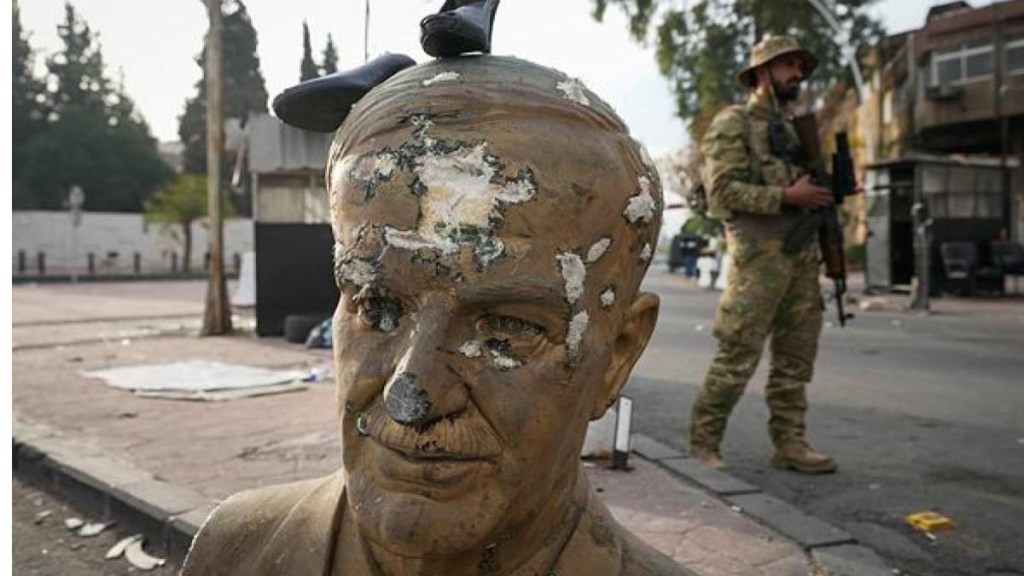Israel’s involvement in Syria, particularly its military strikes on Syrian infrastructure, has been a significant aspect of the country’s security policy, especially since the outbreak of the Syrian Civil War in 2011. As the conflict has evolved, Israel has increasingly focused on eliminating strategic threats posed by Syrian military assets, regional militias, and extremist groups like Hayat Tahrir al-Sham (HTS). Israel’s military actions, including airstrikes and naval operations, have targeted key military sites in Syria to prevent the proliferation of advanced weapons systems and to curb the influence of hostile groups near its borders, particularly in the Golan Heights region.
The Golan Heights and Regional Security Concerns
The Golan Heights, a strategically important plateau, has been a point of contention since Israel captured it from Syria in the 1967 Six-Day War. Israel annexed the region in 1981, a move that has not been recognized by the international community. The Golan Heights offers a commanding view over both northern Israel and southern Syria, making it a critical location for Israel’s defence strategy.
In recent years, the situation in Syria has raised concerns for Israel. With various armed groups vying for power, including HTS, which has ties to Al-Qaeda, Israel has been particularly focused on preventing any militant groups from gaining control over the Golan Heights or establishing a presence near its borders. HTS, under the leadership of Abu Mohammad al-Jolani (also known as al-Golani), has been a prominent player in the Syrian conflict. Born in the Golan Heights, Jolani has made statements about the group’s broader regional ambitions, including threats related to Jerusalem. This has prompted Israel to closely monitor the activities of HTS and other groups that could pose a direct security risk.
Israel’s Military Response: Airstrikes and Naval Operations
In response Israel has launched a series of military operations aimed at neutralizing potential threats in Syria. These operations have primarily focused on Syrian military infrastructure, including air defence systems, missile stockpiles, naval assets, and weapons manufacturing sites. The Israeli military, the Israel Defence Forces (IDF), has carried out extensive airstrikes and naval strikes, targeting specific military assets to prevent them from falling into the hands of hostile groups.
In a recent escalation, Israel’s military struck several key Syrian military sites, including naval vessels at the Al-Bayda and Latakia ports. The strikes destroyed 15 Syrian warships, which had been stationed in these ports. The IDF also reported the destruction of sea-to-sea missiles, which had the potential to pose a threat to both civilian and military vessels in the Mediterranean region. The destruction of these missiles, some with ranges of up to 190 kilometers, was considered a necessary step to ensure maritime security in the area.
Additionally, Israeli fighter jets conducted numerous airstrikes on military sites across Syria, including weapons depots, airfields, and anti-aircraft systems. These operations targeted strategic military assets in cities such as Damascus, Homs, Tartus, Latakia, and Palmyra. The aim was to degrade Syria’s military capabilities, specifically its missile stockpiles, fighter jets, helicopters, and drones. Israel’s military stated that these strikes were intended to prevent advanced weaponry, including Scud missiles and cruise missiles, from falling into the hands of extremist groups like HTS or Iranian-backed militias operating in Syria.
Aiming to Prevent the Spread of Advanced Weaponry
Israel’s military strategy in Syria has focused on preventing the spread of advanced weaponry, particularly long-range missiles, drones, and other military systems that could threaten Israeli security. Israel has expressed concern that the Syrian regime, or more importantly, Iranian-backed forces and Hezbollah, could use Syria as a staging ground to transfer sophisticated weapons to groups hostile to Israel. Israel’s strikes have been part of a broader effort to disrupt these potential supply lines and to prevent such weapons from being deployed near its borders.
Israeli officials have repeatedly stated that their goal is to prevent the transfer of advanced weaponry to groups like Hezbollah, which operates in southern Lebanon, and to militias aligned with Iran, which have established a presence in Syria. By targeting key military assets in Syria, Israel aims to reduce the ability of these groups to acquire and deploy advanced missiles and other weaponry that could be used against Israeli targets.
Reactions to Israeli Actions
The Israeli strikes in Syria have been met with varying reactions, both regionally and internationally. Within Syria, the government has condemned Israeli airstrikes as violations of its sovereignty. However, the Syrian regime has been significantly weakened by the civil war, and its ability to retaliate effectively has been limited. While Russia, a key ally of the Assad government, has occasionally expressed concern over Israeli actions, it has not taken major steps to prevent Israel’s operations in Syria. Russia, which has its own interests in Syria, including maintaining a military presence at key bases, has maintained a cautious stance regarding Israeli strikes on Syrian military infrastructure.
Meanwhile, Iran and Hezbollah have also condemned Israel’s actions, as these groups are directly involved in supporting the Syrian regime and in conducting operations against Israeli targets. Iran has a strategic interest in maintaining a foothold in Syria, and Israel’s military operations are seen as a direct challenge to Iranian influence in the region.

